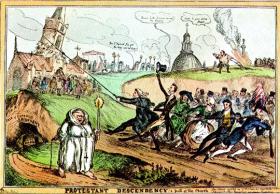
With few exceptions, today’s sheriffs are elected officials who serve as a chief law-enforcement officer for a county. Most people would be surprised to know that the office of sheriff has a proud history that spans well over a thousand years, from the early Middle Ages to our own “high-tech” era. Such is the power of old movies and television series, which have so magnified the role of the nineteenth-century American sheriff that it is now virtually impossible to think of sheriffs as existing in any other place or time. What is a sheriff? Mention the word “sheriff” and many people’s minds will fill immediately with images of shootouts and gunfights in the Wild West. Vehicle Equipment and Upfitting Procurement.Catastrophic Inmate Medical Insurance Plan.Statewide Misdemeanant Confinement Program.Administrative Assistant – Operations & Support Services.Administrative Assistant – Criminal Justice Programs.It was the responsibility of Kindreds ( Cenedl ) for the conduct of the members. The Laws of Hywel Dda put responsibility for enforcing law collectively. The families of murder victims, for example, would be compensated financially. The laws set out a system of compensation for victims of various crimes. However, the Laws of Hywel Dda continued to be used for civil cases until 1540. In 1284 the Statute of Rhuddlan enforced the use of English law for all criminal cases in Wales. After the Norman Conquest, the Laws of Hywel Dda continued as the basis of the Welsh legal system. He also wrote Wales’ first uniform legal system. He unified most of Wales under his leadership.

Hywel Dda was a Welsh ruler in the 10th century. Each village or manor still had a manor court, held by the local lord or landowner for minor cases. JPs were usually the main local landowners.

County courts were set up with Justices of the Peace (JPs), also known as Magistrates, hearing cases. Royal judges travelled around the country dealing with serious cases. The role was unpaid and the Constable would lead the hue and cry as well as have other responsibilities. These would be leading villagers who would take the role for one year. They enquired into violent or suspicious deaths, with the support of a jury of local people.Īfter 1250, villages started to appoint constables in each village to monitor law and order. The Sheriff would also hold a criminal after capture in the local gaol.Ĭounty Coroners were appointed after 1190. A Sheriff also investigated major crimes, again with the help of a jury of local people who would swear an oath to say who they believed had committed the crime.

All men over 15 could be forced to join a posse by the Sheriff.Ī posse would also deal with any local rioting. If villagers failed to catch a criminal, the Sheriff would form a posse comitatus to continue to chase the criminal. They were appointed by the King and were the chief legal officer in the Middle Ages. If one member of the ten broke the law, it was the responsibility of the others to catch the culprit and take him to court.ĭuring the medieval period, there had been some developments in this system.Ĭounty Sheriffs were appointed to oversee law and order in a county.


 0 kommentar(er)
0 kommentar(er)
